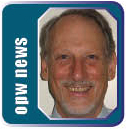 By Peter Bergel
By Peter Bergel
The peace movement in the United States has had few new ideas for decades. We are still using the main organizing tools we used in the 60s and before: demonstrating, educating, lobbying and electioneering. Occasionally we also engage in civil resistance direct actions to halt something particularly egregious. Most of these approaches are drawing less support than they used to (with the notable exception of the School of the Americas protests each fall at Ft. Benning, GA).
Demonstrations that used to involve hundreds of thousands now are lucky to draw tens of thousands. They used to “demonstrate” support. Now they are becoming embarrassing as they “demonstrate” its absence. Our educational efforts are quite effective at changing minds, but despite that, they rarely lead to changes in policy. Our lobbying, valiant and essential as it is, is far outpaced by the legions of corporate lobbyists opposing us. Our electioneering sometimes results in our gaining a seat in Congress or some other governmental entity, but those whom we support sometimes betray us, and even if they do not, they too are overwhelmed by corporate servants. In short, if we choose “battlefields” (pardon the language) that can be dominated by money, we lose much more than we win.
New Paradigm Needed
OPW believes it is time for the entire progressive movement to seek new paradigms for social change work. The first step in that process is to develop a shared vision of the world we want in our future. We must answer the question: “If peace broke out, what would it look like?”
We all have some of the answers, but we need a sweeping, compelling vision that will attract supporters in large numbers, much as the vision of the Nuclear FREEZE did in the 1980s and the Civil Rights Movement did in the 50s and 60s. To paraphrase Martin Luther King, we must have a dream — a shared dream we can all articulate. We must understand clearly where we are and where we want to go. With that vision we are likely to develop new organizing approaches that emphasize our strengths and are not undermined by our weaknesses.A truly peaceful world vision can not be limited to the areas where the peace movement has traditionally worked. It must include at least these sectors (and probably others):
- Conflict resolution at the local, regional and global levels
- Housing
- Energy production and distribution
- Food production and distribution
- Transportation of people and goods
- Environmental protection
- Education
- Recreation
- Economics
- Health care/wellness
- Merchandising
- Government
- Justice/crime/human rights/civil liberties
While it is obviously not possible for every person to work in every area, we should all understand the connections between the sectors and value the efforts of others choosing to work to bring about other parts of the vision.
Shoulders to Stand On
Futurists such as David Korten, Robert Kennedy, Jr., Vandana Shiva, Hazel Henderson, Paul Hawken and others have been at work formulating this vision for some time. It is time for the peace movement to get on board.
OPW’s PeaceWorking Blog (www.oregonpeaceworks.org/wordpress) will become a forum where these ideas will be discussed and where information about developing projects will be posted. Stay tuned to this exciting program. Φ
Peter Bergel, OPW’s Executive Director, has spent much of the last half century working within the old paradigms.
